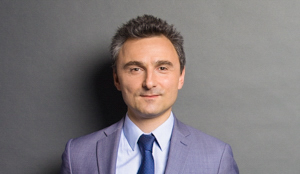New French UAS Regulation – A Welcome Reform
Since France adopted civil UAS regulation in 2012, the sector has developed significantly, from 90 operators in 2012 to more than 2000 operators today.
Such growth led to rethinking of the regulation. Two decrees (French “Arrêtés”) were published on December 17th, 2015 and entered into force on January 1st, 2016, to replace the pre-existing regulation while maintaining a similar structure:
- A decree regarding design conditions, conditions of use and the pilot competence (the “Design Decree”);
- A decree regarding integration of UAS with other airspace users (the “Airspace Decree”).
Like the previous one, the new regulation is based on the use of the UAS rather than on the specifications of the machine itself and distinguishes between recreational or leisure operations and use of UAS for business purposes or experimental flights. Consistent with the proposed European categorisation, business operations are referred to as "specific" activities. The purpose of this paper is to report on the main changes regarding the first two categories.
I) Leisure practices:
The new regulation simplifies the classification of UAS used for leisure purposes by dividing them into two categories:
- Category A: This refers to tethered UAS (i.e. connected to the ground or to a person) weighing 150 kg or less, and non-tethered UAS weighing 25 kg or less with certain power limitations.
- Category B: all UAS used for leisure purposes other than Category A. Category B flights require authorisation from the competent authorities, certifying that the conditions regarding the UAS and pilot skills are satisfied.
The key regulatory developments in the new decrees on leisure operations are:
- Ability to perform aerial photography for private purposes under certain conditions;
- In the absence of specific authorisation, urban areas amount to "no fly zones". This reverses the principle which applied under the previous regulation;
- Authorisation of flights beyond the line of sight (BLOS) of the pilot in certain conditions;
- Simplification of the issue of flight authorisations for category B UAS.
II) Specific activities:
Since 2012 the regulation has identified four operational scenarios (Annex 3 of the Design Decree) for which conditions of authorisation have been defined in detail. Any flight outside these four scenarios must be specifically authorised, after a case-by-case examination.
The operator of a UAS used for specific activities must declare its activity to the French civil aviation administration. In particular, the operator must document his activity and specify how it complies with the regulatory obligations in a specific manual which is available to the authorities. This constitutes an important simplification, since the former regulation required the administration to validate the manual.
Pilots must hold a certificate of competence and the operator must verify their practical competence. For more complex operations (BLOS and long distance flights), pilots must be licensed and have a minimum level of experience as a pilot of a manned aircraft.
To ensure the protection of other aircraft, UAS flights are permitted only below a height of 150 meters, unless specifically authorised. In addition, BLOS flights are only permitted below 50 meters if they weigh 2 kg or less.
The regulation lays down provisions to protect third parties on the surface and other airspace users, which differ depending on the different specifications of the flight. Four scenarios (S1-S4) of use are defined with specific requirements for each one.
The main regulatory changes regarding specific activities are:
- The scope of certain pre-defined operational scenarios was extended;
- Many administrative procedures have been simplified (e.g. a simple declaration is now required for flights over populated areas);
- Certain technical requirements have been clarified (for example, the rescue parachute, to limit the impact force for UAS above 2 kg used in scenario S3, must be deployed before the UAS has fallen 15 meters);
- For BLOS flights, an independent forced landing control capability, in the event of failure of embedded automatic systems, must be incorporated for S2 and S4 scenarios within a transitional period of 12 months;
- Finally, as for leisure practices and experiment, the possibility of night flights is introduced but is subject to specific authorisation granted by the administration.
Conclusions:
This new regulation strikes a balance between supporting the development of the sector addressing some of the concerns of the authorities, operators and the public. It is important to emphasize that, unlike the US regulation, the French regulation does not currently require UAS under 150 kg to be registered. Furthermore, given the complexity of regulations and the number of authorisations/declarations required, we may regret the absence of an automatic system to track and monitor flight plans. This flexibility could help to promote the growth of the sector. There is no doubt that future developments can be expected, even before the establishment of the European regulation currently under discussion.
See also:



